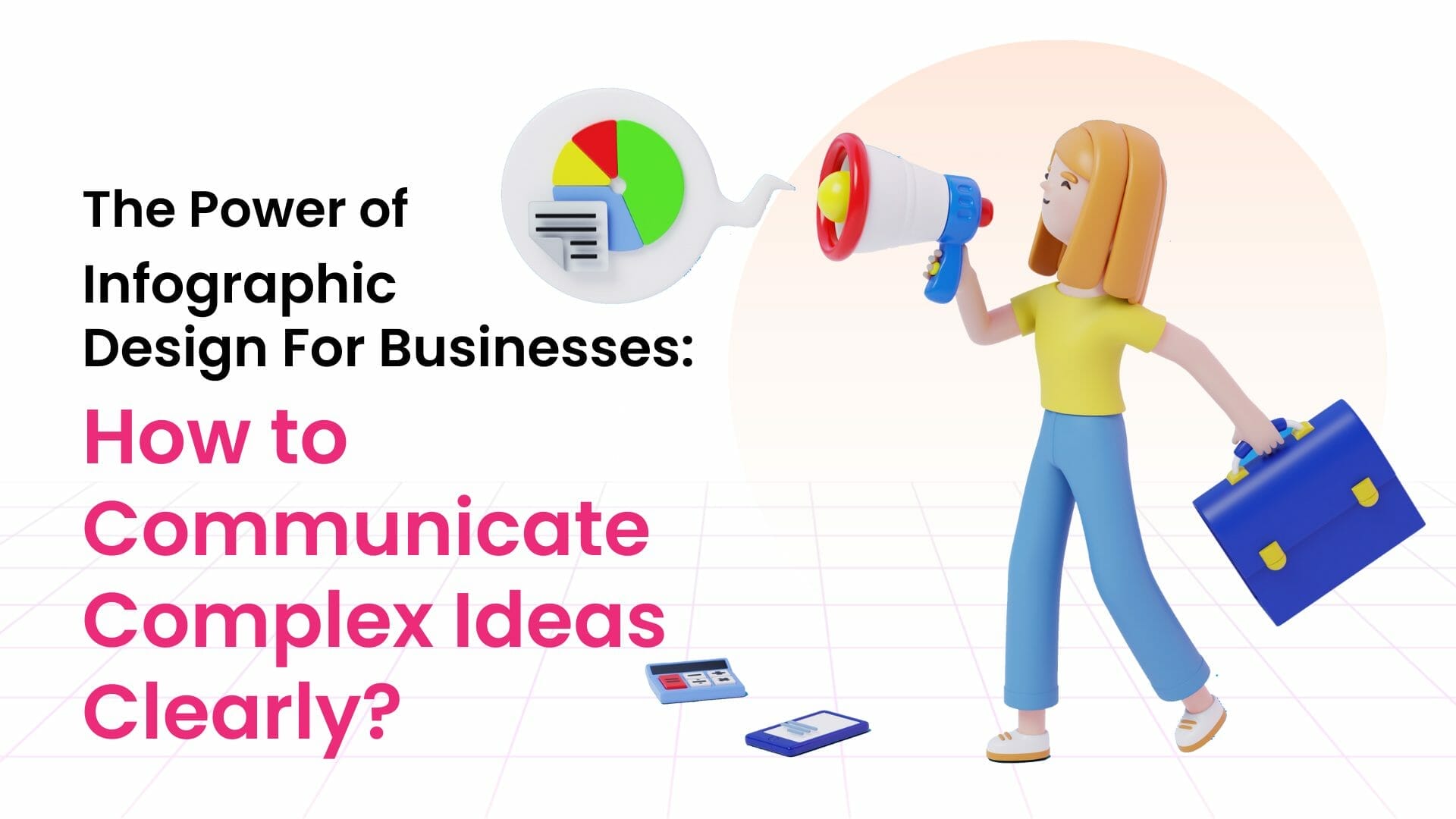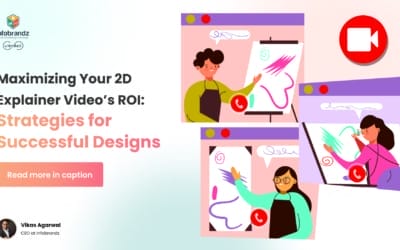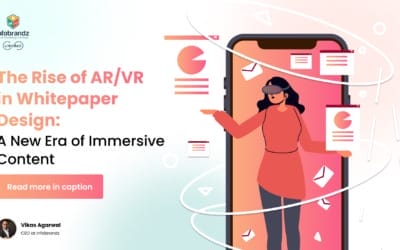Marketing is all about getting your message across to your audience clearly and convincingly. However, this is getting challenging as the competition rises steeply and attention spans narrow.
As businesses look for new methods to overcome this hurdle, infographics are proving to be one of the most effective options for communicating complex information persuasively. In fact, high-quality infographics are 30 times more likely to be read than text articles. Moreover, publishers that feature infographics grow traffic 12% faster than publishers that don’t feature infographics.
With such impressive numbers backing them, it is apparent that infographics are an effective marketing tool that you must leverage in 2023. So, this guide will help you get started with infographic design with step-wise explanations and leading examples. Let’s begin!
What is Infographic Design?
Infographic design is the process of creating visually engaging representations of complex information or data. This information may include product features, statistical data, processes, comparisons, and more.
Good infographic design involves combining elements of graphic design, data visualization, and storytelling to convey a message or idea concisely but impactfully. The resulting infographics are interesting, convincing, and easily understandable.
Benefits of Using Infographic Design in Business
Using infographic design in your business can lead to numerous benefits. After all, your audience would naturally prefer to view a brief and aesthetic graphic to understand complex data within seconds rather than read a long and boring text for the same purpose! Here is a complete list of the benefits of using infographic design in business:
- Simplifies complex information- Infographics break down complex data, concepts, or processes into easily digestible visual representations, making them more accessible and understandable for the audience.
- Enhances engagement- Visual elements grab attention and encourage engagement, increasing the likelihood of your content being shared, discussed, and remembered by your target audience.
- Boosts brand awareness- By creating and sharing visually appealing infographics that contain your logo and brand colors, you can increase your brand visibility and recognition.
- Improves SEO- Infographics are shareable, which can lead to more backlinks and a higher search engine ranking, ultimately driving more traffic to your website.
- Appeals to different learning styles- Infographics cater to visual, auditory, and kinesthetic learners by combining text, images, and interactive elements that accommodate various learning preferences.
- Simplifies storytelling- Infographics allow businesses to tell their story in a concise and visually appealing way, helping them to convey their message effectively.
- Enhances social media presence- Infographics are easily shareable on social media platforms, increasing your content’s reach and potentially attracting new followers and customers.
- Facilitates decision-making- By presenting data and insights visually, infographics can help stakeholders better understand complex situations, allowing them to make informed decisions more efficiently.
- Encourages data-driven discussions- Infographics can serve as conversation starters, enabling data-driven discussions among team members and fostering a more analytical approach to problem-solving.
- Increases retention and recall- Visual information is more easily remembered than text, making infographics a powerful tool for communicating key messages that you want your audience to retain and call.
How to Design Infographics
Designing an effective infographic requires careful planning and attention to detail. Here are the steps involved in the process, along with some tips to guide you along the way:
Step 1: Outline your goals for creating your infographic
Before you start making infographics, it’s essential to establish your objectives. Consider the message you want to convey and the target audience you want to reach. Knowing your goals will help guide your design decisions and ensure your infographic is both relevant and engaging.
Step 2: Collect data for your infographic
Once you have a clear understanding of your goals, you’ll need to gather relevant information and statistics to support your message. This could involve conducting research, compiling data from various sources, or even creating original content. Be sure to use credible sources and keep track of your references for proper attribution.
Step 3: Choose the right tools or designer
Before moving to the next step, you would naturally need to select and learn a tool such as Canva, Figma, Adobe design tools, or even PowerPoint based on your level of expertise and requirements. Alternatively, you can work with an infographic designer if you have some bucks to spare!
Step 4: Make data visualizations for your infographic
With your data in hand, you’ll need to choose the most appropriate visual elements to represent the information. This could include charts, graphs, illustrations, or other visual elements that effectively convey the data. Consider the type of data you have and the best way to visualize it for your audience.
For example, a pie chart may be suitable for showing percentages, while a line graph might be better for representing change over time. You can either make these quickly using templates from the tool you use or make them from scratch for maximum customization.
Step 5: Create your layout using an infographic template
Once you have your visual elements ready, you’ll need to arrange them in a logical and visually appealing manner. One way to streamline this process is by using an infographic template, which can provide a pre-designed layout that you can customize to fit your needs. There are many online tools and resources available to help you find and modify templates to suit your specific requirements.
When arranging your visual elements, consider the flow of information and how your audience will read the infographic. Aim for a balance between visual appeal and clarity, ensuring that your design is easy to follow and understand.
Step 6: Add style to your infographic design to make it stand out
The next step is to add style to your infographic. This involves choosing colors, fonts, and other design elements that align with your brand and enhance your message. Consider the overall aesthetic of your infographic and ensure that it is visually appealing and cohesive.
When selecting colors, consider using a limited color palette to maintain visual consistency and avoid overwhelming your audience. Choose fonts that are easy to read and complement the overall design. Don’t forget to add any necessary labels, captions, or annotations to provide context and enhance understanding.
Step 7: Add the finishing touches
All done? Now, you need to take a step back and review your infographic as a whole. Make any necessary adjustments to ensure that it effectively communicates your message and engages your target audience. You can’t always get it right on the first go, and adjustments may be necessary.
Infographic Design Best Practices
You must follow various time-tested best practices for making infographics quickly and affordably. Here are the top ten best practices for creating good infographics-
- Use the right visual tools
- Choose the right template
- Prepare a catchy headline
- Double-check your statistics
- Avoid overcrowding the infographic
- Optimize your infographics for better SEO
- Set the dimensions as per the publishing platform
- Match the graphics and script with the brand and its UVPs
- Consider your target audience while designing your infographic
- Focus more on visuals that directly depict data, such as charts and graphs
If you plan to go with an infographic designer, make sure to select one that has experience and success in your niche and work closely to ensure the best results.
Real-life Examples of Successful Infographic Design and Use
Here are some real-life examples of successful infographic design and use to help you draw some quick inspiration:
Course Hero- Their infographics series simplifies complex concepts into simple and informational visuals. This makes it easier for learners to understand the material, increasing comprehension and engagement.
https://www.coursehero.com/lit/The-7-Habits-of-Highly-Effective-People/
LinkedIn Marketing Solutions- These creative infographics provide valuable tips and insights for marketers, helping them work smarter. They are simple yet information-packed images that convey the underlying message beautifully.
Infobrandz- Our catchy and informative infographics are designed to convey the client’s brand voice and unique value proposition in a simple yet impactful style. They stick to themes, designs, and visualization tools that perfectly match the brand and the message while avoiding overcrowding through strategic placement.
Conclusion
Infographic design is a powerful tool that can help entrepreneurs communicate complex ideas and information clearly and effectively. By harnessing this power, you can elevate your communication, engage your audience, and ultimately, grow your business.
Remember to follow the best practices and learn from the successful examples we discussed as you venture into the world of infographic design. At the same time, keep in mind there are no universal rules of design. So, you must consider your business’s unique goals, audience, and message and experiment with different formats to find what works best for your brand. You can also work with an affordable infographic design service like us at Infobrandz to get premium infographics that grab the audience’s attention and perfectly convey your brand’s voice and value proposition. All the best!











0 Comments